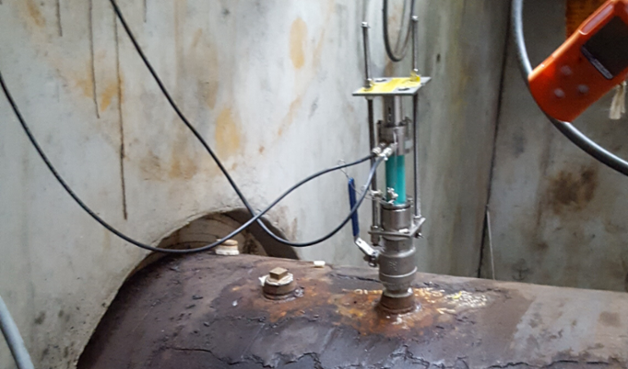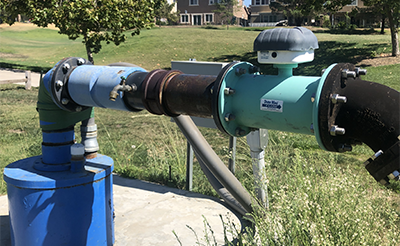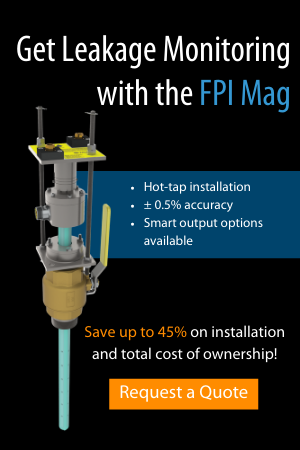Debris in Flow: Meter Recommendations for Agricultural Applications
Debris in a pipeline can mean a wide range of organic or inorganic matter – but what really matters is the effect it has on your flow meter and measurement data.
So, how does debris affect various flow meters, and what are your best options for various flow applications?
Let’s review.
Debris in Agriculture Applications
Agriculture surface water applications divert water from lakes, rivers, or other similar sources, and due to that, natural vegetation is abundant and often flows right along with the water into the pipeline. When irrigators pump water out of those surface water bodies, there can be grass, moss, leaves, and more that can accumulate. Even fish or small turtles can be considered “debris” in the line!
While irrigators often screen water pumped from these surface water sources, some organic matter may still make it through. This matter, as well as sediment, can cause issues for mechanical meters by either lodging in one of the moving parts, or catching on the propeller and affecting accurate readings. Additionally, dairy lagoon effluent can be considered debris in the line as well, as it’s technically “foreign matter” and is more acidic and harsher on the meter and pipeline in general.
Measuring Flow with Mag Meters
Rough particulates in larger sediment debris can rip or tear liners in certain electromagnetic (mag) flow meters, causing meter functionality issues and possibly costly meter replacement. Mag meters like McCrometer’s Dura Mag® or the Mc®Mag3000 are coated in a fusion-bonded epoxy with a lifetime guarantee against delamination, resulting in a rugged flow meter built to withstand harsh particulates.
The Dura Mag, McCrometer’s full-bore mag for agriculture applications, comes highly recommended for applications facing debris, as this meter isn’t intrusive in the line and is highly accurate up to ± 1% in line sizes 2” – 12”.
Mag meters, in general, perform quite well with dirtier, debris-filled flow. The mag meter technology needs particulates in the water for the electrodes to obtain a reading of the flow; ultra-pure water is difficult for the mag meter, as it cannot send out electromagnetic signals to read the conductivity of the flow. This is a major advantage of the mag meter and sets it apart from the ultrasonic, which it’s commonly compared against when irrigators are deciding between “no moving parts” flow meters. An ultrasonic meter has a transducer on the outside of the pipe that emits soundwaves and will encounter trouble reading flow if the water contains air bubbles, particulates, or other impurities.
For additional information about how the mag meter compares to the ultrasonic, check out our technical article containing more in-depth information.
Measuring Flow with Propeller Meters
While mag meters might be popular with some irrigators and farmers, the classic propeller is still a favored technology with a portion of the population.
To meet the needs of that market, McCrometer offers the “reverse” water meter for surface water applications.

The M0308SW, the “reverse” McPropeller.
This meter is our popular Mc®Propeller, but the support “L” points downstream, allowing for debris shedding. The way the propeller is positioned in reverse allows the propeller to flush away more sediment away from the bearing assembly, so the sediment doesn’t corrode the meter. It’s an advantage to many of our agriculture customers metering from surface water sources or from open canals.
Flow Metering for Water or Irrigation Districts
For water or irrigation districts (or even larger agriculture operations) needing to acquire a higher quantity of flow meters for a bigger flow project, you might consider insertion mag meters. The Mc®Mag3000 and the McMag2000™ are great options for shedding debris, as their angled sensors are less intrusive and positioned away from the flow.
For districts retrofitting flow meters, the insertion mags are ideal, as a hole saw can be used in the existing pipeline to conveniently insert the probe of the saddle-style mags into the line. Additionally, the Mc®Mag 2000 meter retrofits using the McPropeller’s saddle, which is another great choice for irrigators making budget-conscious decisions.
For new flow projects, we’ve heard from irrigators it’s easier to plan in the use of flanged meters, compared to retrofits. If that’s the case, the Dura Mag fits that request!
Navigating Debris in Your Flow Project
No matter what development phase you find yourself in, McCrometer has a flow meter to meet your needs. Measuring debris-filled water is only one of the challenges our meters are equipped to handle. For more information or to receive a quote on your next flow project, check out our agriculture and irrigation page.
Related Posts
Featured Posts
Get into the Groove: McCrometer’s Grooved-End Mag Meter
We’ll share the big news upfront! McCrometer’s integrated grooved-end mag meter is the only version on the market, and it’s revolutionary for a reason. Engineered to meet customer demand, this meter launched in January 2024 and is available for order now. This...
Produced Water and Blending Flow Meter Use Case
Produced Water is a byproduct of oil production. Whether it is a byproduct of flow back or the water component of the oil separation process, produced water can be a difficult measurement point but is a very important part of the process. Several parameters make it...
Get your Groove on Now: McCrometer’s Grooved-End Mag Meter Now Available
It is time to get your Groove On. McCrometer has released their innovative Electromagnetic Flow Meter with integrated Grooved End connections. Are you tired of bolting on extra flanges with Victaulic end connections welded to them? It is time consuming and makes an...
Request More Information








